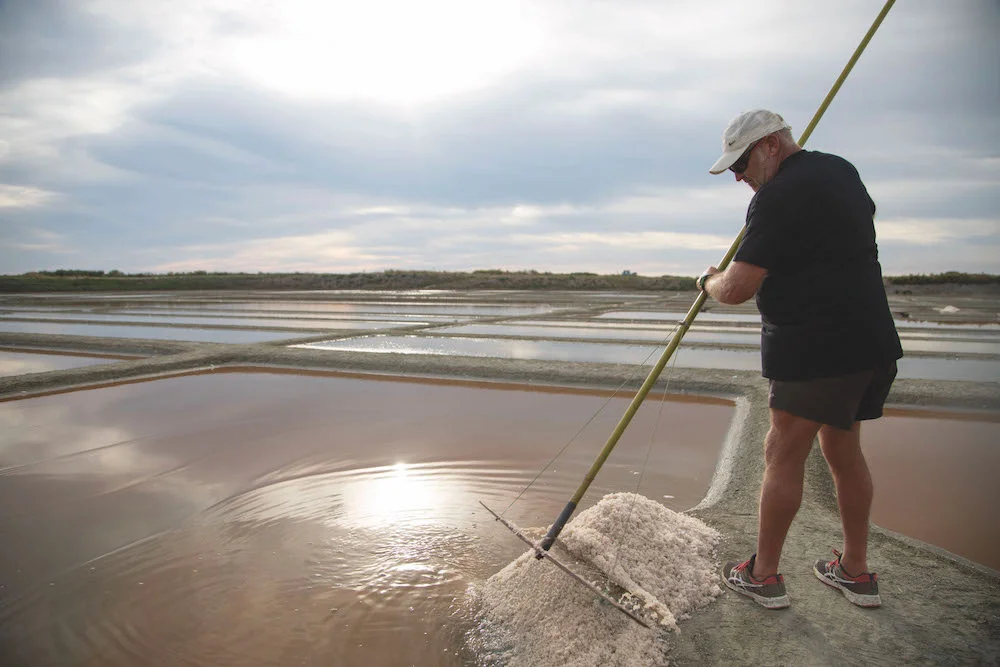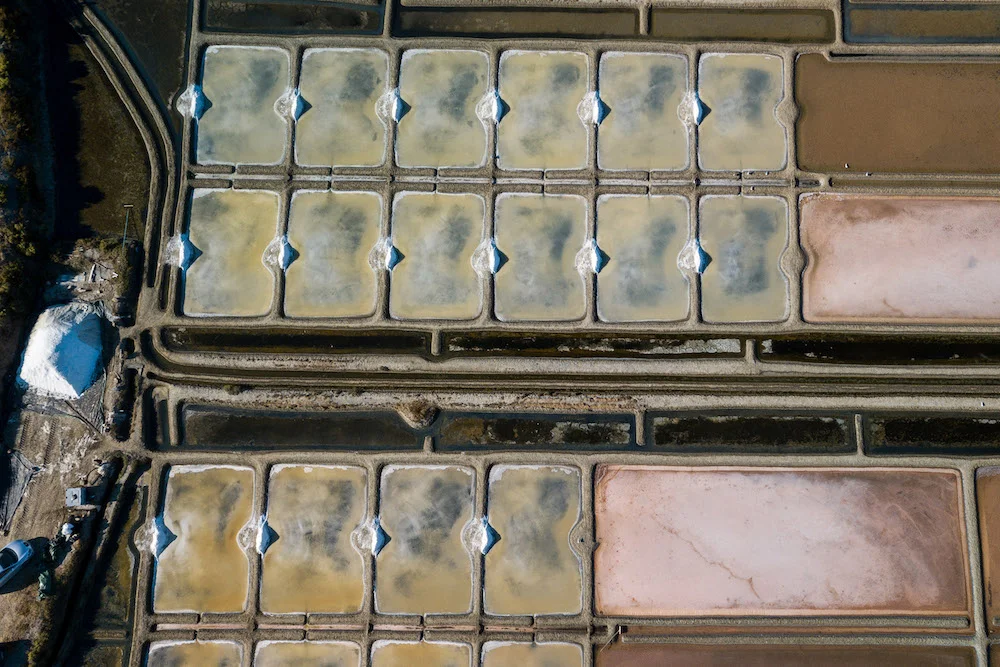How the salt marshes works ?
We harvest 2 types of salts: Coarse salt and Fleur de sel. Coarse salt is formed by crystallization on the clayey bottom of the carnations while the flower forms on the surface of the water.
The Guérande salt marshes function by gravity.
They are built between the level of the high tide, to fill the reservoirs, and the low tide to empty them. The fresh water of winter needs to be removed before the preparation work can begin.
The soil type is very important – it must be clay to guarantee waterproofing between the different levels, be malleable, and able to keep cool to ensure the best crystallisation.
A good salt works must be “ventilated”, ie. well-orientated compared to the prevailing winds, far from obstacles and not too enclosed.
Along the water flow, we find :
- The “vasière” (primary pond): a water reserve which supplies the salt works between tides (15 days), it is the largest part of the salt production site, horizontal over most of its surface (the “pelloué”) with a trough along its edge (“rai”) to allow cleaning. Its surface may vary, but represents 40% of the salt works.
- The “cobier” (evaporation ponds) are made up of fairly rough, large ponds, which are designed to increase concentration to a high enough level to remove algae (“limu”) and crustaceans (“bigots”) – the salt worker’s enemies. This area is not mandatory, but very practical, and it appeared fairly late in the history of the salt marshes. It can represent on average 10% of the salt works.




